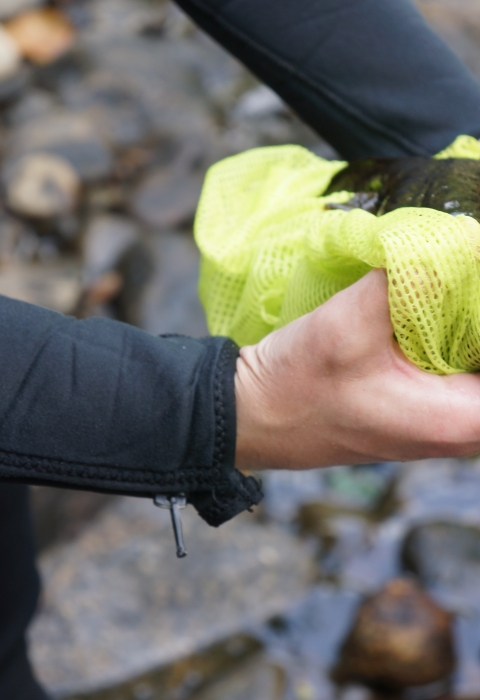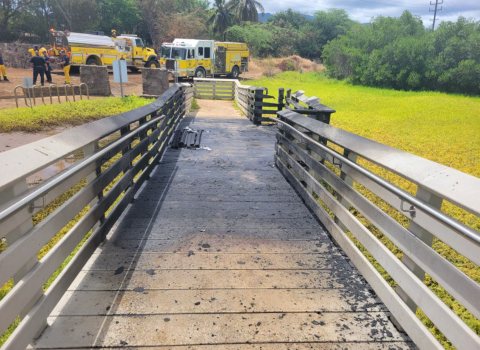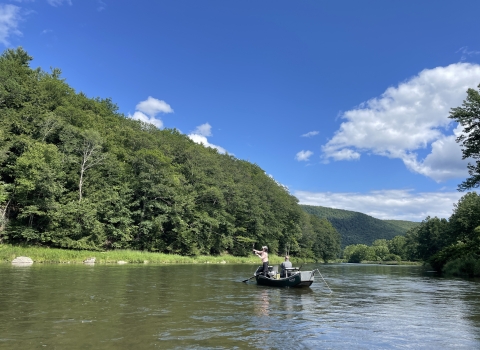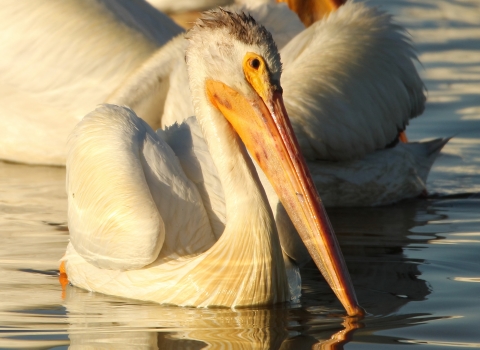Working with our partners, our agency has developed a plan to save the Missouri Distinct Population Segment (DPS) of the eastern hellbender, the largest salamander in North America. We at the U.S. Fish and Wildlife Service announce the release of the final recovery plan for the Missouri DPS of the eastern hellbender, now available for partners and others to guide efforts to save the species.
Growing to more than 2 feet in length, eastern hellbenders are fully aquatic salamanders and can be found in streams and rivers in 15 states. The Missouri DPS of the eastern hellbender consists of three populations in the northern portion of the Ozark Highlands. The Niangua River population consists of individuals in the Niangua River; the Gasconade River population consists of individuals from the Gasconade River, Osage Fork of the Gasconade River and Big Piney River; and the Meramec River population consists of individuals from the Meramec River, Huzzah Creek, Courtois Creek and Big River.
Eastern hellbender populations in Missouri were listed as endangered in 2021 under the Endangered Species Act, which means they are in danger of extinction. Threats include degraded water quality, habitat loss, disease, illegal collection and predation. Populations have declined more than 70% since the 1970s, which has necessitated augmentation of wild populations with young head-started from eggs collected from the wild or from captive breeding. These activities are intended to ensure the long-term survival of the Missouri DPS until threats are better understood and abated.
The first objective of the recovery plan for the eastern hellbender DPS is to ensure habitat is available to support viable populations. Adult eastern hellbenders spend most of their life in bedrock crevices or under large, flat rocks in riverbeds, whereas larval and juvenile hellbenders generally shelter under smaller rocks and within spaces in cobble and gravel. The second objective is to establish and maintain viable populations within the Niangua River, Gasconade River and Meramec River watersheds, including occupied tributaries.
It is expected that recovery efforts for the Missouri DPS of the eastern hellbender will reduce sedimentation and improve water quality in the aforementioned watersheds, which will also improve drinking water, as well as benefit multiple federally listed mussels, sport fish and other aquatic species.
Recovery planning is one step in a process to address threats to endangered and threatened species. Plans provide a road map for private, Tribal, federal and state cooperation in conserving listed species and their ecosystems. While a recovery plan provides guidance on how best to help listed species achieve recovery, it is not a regulatory document. Learn more about the Recovery Plan for the Missouri Distinct Population Segment of the Eastern Hellbender (PDF).
In addition to the recovery plan, we concurrently developed a Recovery Implementation Strategy (RIS), which is focused on how, when, and with whom the recovery actions will be implemented in the short-term. Including the activities and how they are implemented in this separate operational document allows us to be able to adapt to changing circumstances and thus have a more flexible recovery strategy. The Recovery Implementation Strategy for the Missouri Distinct Population Segment of the Eastern Hellbender (PDF) was developed with our conservation partners and focuses on the period of time and scope of activities that work best for our partners to achieve recovery goals.




